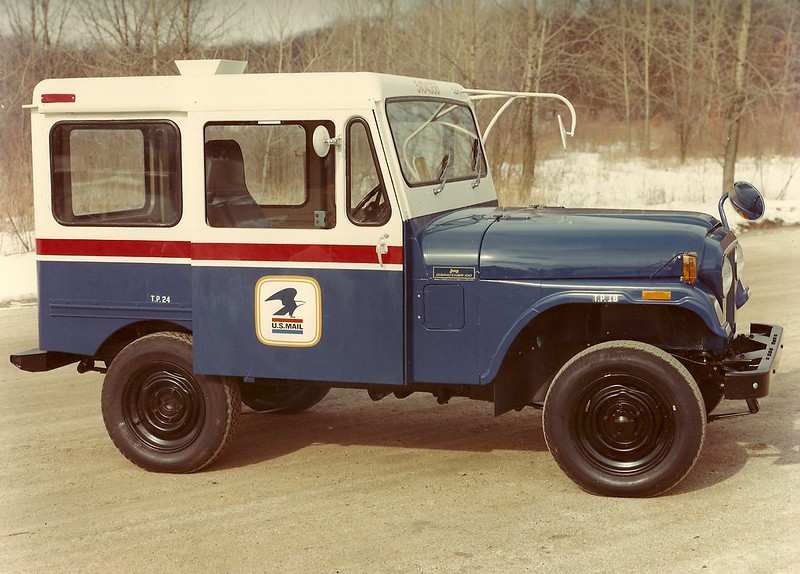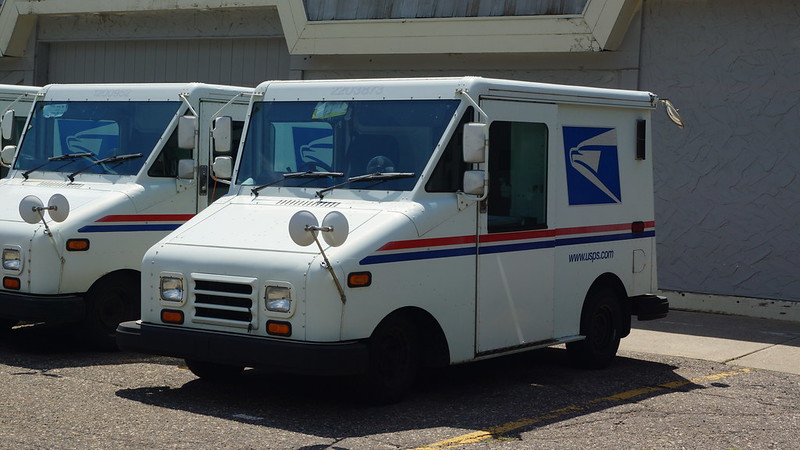A clear childhood memory of mine was when the current USPS delivery vehicle, the Grumman Long-Life Delivery Vehicle (LLV), began to replace the fleet of Willy’s Jeep-inspired mail delivery vehicles in the early 1990s. These lumbering little gas guzzlers were originally slated to last for about twenty years, but today, most of the USPS’s fleet of Grumman LLVs have been on the road for nearly thirty years. Over the past few years, the USPS has worked to select a new design to replace the aging fleet.
With the significant strides in electric truck technology, vastly reduced operating and maintenance costs compared to combustion vehicles, and the fact that, according to USPS, 95 percent of its routes can be serviced by electric vehicles, one would assume that the USPS would be pursuing electric delivery vehicles in full force. Topping this off, the average postal route length of 21 miles is a fraction of the range of nearly all-electric delivery trucks and vans available today. Finally, the 2022 Inflation Reduction Act, which Congress is expected to consider soon, would provide $3 billion to the USPS for the purchase of EVs and charging equipment.
There is simply no logical reason not to pursue a zero-emissions USPS fleet.
The USPS originally planned to purchase a new fleet consisting of just 10 percent electric vehicles (EVs). Thanks in large part to pressure from environmental and labor advocates, the USPS recently announced its new fleet would be at least 40 percent electric. Still, this falls way short of what is possible, leaving up to nearly 13 million metric tons of annual greenhouse gas reductions and over $4 billion in cost savings off the table.

JOHN LLOYD/Flickr
What’s the deal DeJoy?
The Postal Service’s leadership, including Postmaster General Louis DeJoy, has gone out of its way to keep outdated, expensive, and polluting combustion vehicles on its over 230,000 routes by pursuing a mostly gasoline-powered replacement fleet. So far, the USPS’s process to update its fleet has been reminiscent of the Trump Administration’s “bait and switch behind smoke and mirrors” regulatory tactics.
To get to the bottom of the Postal Service leadership’s decision to favor combustion delivery vehicles, we’ll need to put our bureaucratic hats on for a minute or two.
Title 42 of the United State Code deals with topics from environmental protection to civil rights and includes laws that require the federal government to analyze and mitigate the impact of its actions. Because the USPS is a federal agency, it is required to analyze the environmental impacts and benefits of “reasonable alternatives” to any significant proposed action, such as whether to replace the largest civilian vehicle fleet in the world with zero-emissions or fossil-fueled delivery trucks. These analyses are often very detailed, lengthy, and full of jargon, but are referred to as an Environmental Impact Statement or “EIS.”
Okay – bureaucracy lesson over…
While the USPS did complete a detailed, lengthy, and jargony EIS in late 2021, it was rife with unreasonable assumptions and a poor study design from the start. Some of the failures of the EIS are less obvious than others, but none of us would be too dense to find that their use of fuel cost estimates between $2.19 and $2.55 per gallon of gasoline through 2040 when comparing fuel costs between internal combustion engines (ICEs)and battery electric vehicles (BEVs) is way off the mark (see page B-160 of the Final EIS).
Nationally, the average retail price for gasoline over the past 10 years was $2.89 – in fact, the average national price for a gallon of gas has only been less than $2.19 seven times in the past 10 years. Their decision to conduct the analysis with such low and unreasonable gasoline prices makes the gasoline-fueled vehicle options much more cost-effective than they actually are. I’m not sure where the folks who came up with these estimates live (or in what decade for that matter), but in my neighborhood, gasoline has hovered around $6 per gallon for regular grade for several months.
A second and equally egregious failure of the EIS was simply in its study design. While federal law requires agencies to examine “reasonable alternatives” in the EIS, the Postal Service chose to only examine two scenarios: their initial proposal to purchase 10 percent ZEVs and 90 percent gasoline vehicles and a single alternative of a 100 percent zero-emissions fleet. Remember that I mentioned previously USPS had already determined that 95 percent of its routes could be serviced with BEVs? Why then, would they choose to analyze an option they had already deemed to be unreasonable? Why not examine a scenario of 95 percent BEV and 5 percent ICE vehicles? The clear answer is that this unreasonable “alternative” was a half-composted straw man performing to affirm their foregone conclusion to pursue a contract for mostly ICE fleet.
The EIS was fraught with many other issues, some wonkier than others, and I could continue, but this is a blog, not a novel.

States and advocates are returning to sender
If you were to ask me whether USPS knowingly and blatantly broke the law in order to tip the scales to favor a dirty, combustion-powered fleet of delivery trucks, you’d get a big, cynical smile and response of “I’m not an attorney.” However, several folks who are attorneys have answered this question and are suing the Postal Service over its ill-guided decision. In fact, there are currently three separate lawsuits. Back in April, a group of 16 states’ Attorneys General led by California and, separately, several environmental groups including the Center for Biological Diversity, Earthjustice, and Sierra Club filed a lawsuit in San Francisco alleging that the Postal Service broke the law by not completing a legitimate EIS. The Natural Resource Defense Council and United Auto Workers have filed a similar third lawsuit in New York.
If successful, the Postal Service may be required to redo parts of its analysis. If this attempt at an EIS uses real-world assumptions, relevant data inputs, and includes reasonable alternatives, I believe it is very likely that it will favor ZEV delivery vehicles in most cases.
About a month after these lawsuits were filed, the USPS announced plans to issue a Supplemental EIS, but unsurprisingly, the scope of this document does not address any of the faults of the first EIS (fuel cost estimates, study design, etc.). I’m not convinced this analysis will be any more legitimate than the first but was happy to see their related announcement to purchase at least 40 percent BEVs for the new fleet (as I mentioned earlier).
While this is a step in the right direction, it still takes no accountability for their unreasonable Final EIS. A core value that both UCS and I share is that public policy should be science-driven – regulations, laws, or significant government actions must be based on analyses that are objective, repeatable methodologies, and real-world data inputs. The Postal Service has failed to deliver on all of these accounts.

An electric USPS fleet will set a meaningful example
A mostly ZEV USPS delivery fleet would certainly bring meaningful greenhouse gas and toxic air pollution reductions, but I think there’s a larger benefit to the postal fleet’s electrification at play here. More so than the emissions from the fleet itself, the visibility of electric trucks operating daily in nearly every neighborhood across the US sends a solid message – electric trucks are here and ready.
Even as their availability continues to grow rapidly, polling suggests that many consumers in the US lack fundamental awareness of electric vehicles, including both cars and trucks. For example, a 2021 Pew Research Poll of over 13,000 US adults found that around 70 percent of respondents knew “a little” or “nothing at all” and about 85 percent of respondents believed that EVs were about the same or less reliable than gas-powered vehicles. I believe that increased visibility of electric trucks could influence an increase in general knowledge of these vehicles and consumer behavior research backs this up.
While we at UCS are hard at work pushing policymakers for market-spurring regulations, widespread public awareness of the reality and feasibility of these clean and economical vehicles could be a meaningful piece of the larger catalyst for change, especially in states unlikely to adopt California’s ZEV sales regulation.

